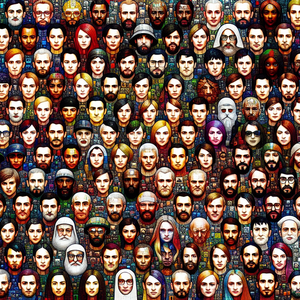From Hard Hats to Smart Helmets: The Evolution of the Construction Laborer

The construction industry has historically been hesitant to embrace change, relying on traditional tools and practices. However, this trend is rapidly shifting as wearable technology becomes an integral part of modern construction sites. These advanced devices are not only increasing efficiency but also revolutionizing worker safety and productivity. One of the most transformative innovations is the smart helmet. Companies like Daqri and Trimble are leading the way with helmets that integrate augmented reality (AR) technology. Imagine a construction laborer looking at a structural beam and instantly accessing information like dimensions, load capacity, and installation instructions through a digital overlay. This eliminates the need to constantly consult blueprints or manuals, significantly reducing errors and saving valuable time. Additionally, these helmets are equipped with sensors that can detect hazards, such as unstable surfaces or dangerous gas levels, providing real-time alerts to prevent accidents. Beyond helmets, exoskeletons are becoming a game-changer for physically demanding tasks. These wearable robotic suits, developed by companies like Ekso Bionics, reduce the physical strain on workers by enhancing their strength and endurance. For instance, a laborer wearing an exoskeleton can lift heavy materials with ease, reducing the risk of musculoskeletal injuries. This technology not only extends the careers of aging workers but also increases overall productivity, effectively turning workers into "superhumans."
Augmented Reality: A Game-Changer for Precision
Augmented reality is revolutionizing how construction projects are visualized, planned, and executed. By merging the physical and digital worlds, AR enables construction laborers to achieve unprecedented levels of precision and collaboration on job sites. A prime example is the use of AR glasses, which allow laborers to visualize 3D models of buildings, piping systems, or electrical layouts before construction begins. This helps workers align materials with exact specifications, reducing costly errors and delays. For example, a laborer installing electrical components can use AR to see exactly where conduits should be placed, ensuring perfect alignment with architectural plans. AR also enhances teamwork, especially on complex construction sites where multiple disciplines must coordinate seamlessly. Plumbers, electricians, and structural engineers can view and interact with the same AR-generated models in real time, ensuring everyone is aligned on project goals. This collaborative approach minimizes miscommunication and streamlines workflows, allowing laborers to take on more technical roles that require interpreting digital models and providing on-the-ground insights.
Enhancing Safety with Real-Time Monitoring
Despite advancements in equipment and safety protocols, construction remains one of the most hazardous industries. Workers face risks such as falls, equipment malfunctions, and environmental hazards daily. However, wearable technology is offering a new layer of protection through real-time monitoring and predictive safety measures. Smart vests, for instance, are equipped with biometric sensors that track vital signs like heart rate, body temperature, and fatigue levels. If a worker begins to show signs of heat exhaustion or overexertion, the system can alert supervisors to intervene before an incident occurs. Additionally, location-tracking devices ensure that workers stay within safe zones, reducing the likelihood of accidents involving heavy machinery or restricted areas. Artificial intelligence (AI) is also playing a significant role in construction safety. AI-powered cameras can analyze job site conditions and identify potential hazards, such as missing safety barriers or improper equipment usage. These cameras can then send alerts directly to workers’ wearable devices, creating an interconnected safety network. By leveraging AI and wearable technology, construction companies can proactively address risks, creating safer environments for their workforce.
The Human Touch: Why Laborers Are Still Essential
While technology is undoubtedly transforming construction, it’s crucial to recognize the enduring value of human workers. Machines, wearables, and AI can assist laborers, but they cannot replace the intuition, creativity, and adaptability that humans bring to the job. For example, unexpected challenges such as weather changes or material shortages often require quick thinking and decision-making—skills that machines lack. Laborers possess the experience and situational awareness to adapt to these challenges, ensuring that projects stay on track. Moreover, construction is as much an art as it is a science. The craftsmanship and pride that laborers bring to their work are irreplaceable, adding a human touch that technology cannot replicate. As technology continues to evolve, the role of the construction laborer is shifting from physically intensive tasks to more skilled responsibilities. Workers will increasingly focus on operating advanced tools, interpreting digital models, and collaborating with technology to achieve better results. This shift not only elevates their role but also highlights the importance of ongoing training and skill development to keep pace with technological advancements.
Forces Driving Change in the Industry
The evolution of the construction laborer is being driven by several key forces, including automation, AI, and shifting consumer preferences. Automation and AI are streamlining repetitive tasks, allowing workers to focus on more complex and creative aspects of construction. Meanwhile, consumers are demanding faster, more sustainable, and cost-effective construction solutions, pushing companies to adopt innovative technologies. However, concerns about job displacement remain. As machines take over certain tasks, there is a fear that the need for human labor will diminish. Yet, history shows that technological advancements often create new opportunities. In construction, the demand for skilled workers who can manage and maintain advanced tools is likely to grow, ensuring that laborers remain an integral part of the industry.
The construction laborer of the future will be a far cry from the traditional image of a worker with a hard hat and a toolbox. Instead, they will be equipped with smart helmets, AR glasses, and robotic exoskeletons, transforming job sites into high-tech hubs of innovation. These advancements will not only enhance safety and efficiency but also redefine the role of the human worker, allowing them to focus on creativity, problem-solving, and collaboration. Rather than replacing laborers, technology is poised to empower them, amplifying their abilities and ensuring their continued relevance in a rapidly changing world. The construction industry is entering an exciting new era where humans and machines work hand in hand to build the future. In this evolution, the human touch remains irreplaceable—an enduring reminder that progress is not just about technology but about the people who make it possible.
Construction Technology Specialist
Turner Construction, Skanska, and Bechtel
Core Responsibilities
Implement and manage wearable technologies, such as smart helmets and exoskeletons, on construction sites to enhance safety and productivity.
Train laborers and supervisors on the use and integration of augmented reality (AR) devices and other tech tools.
Collaborate with project managers and engineers to ensure technology aligns with construction workflows and project goals.
Required Skills
Strong knowledge of construction processes and familiarity with emerging construction technologies.
Experience with AR/VR platforms, IoT devices, and wearable tech, such as Trimble or Daqri systems.
Ability to analyze data from wearable devices to optimize safety and efficiency.
Augmented Reality (AR) Engineer for Construction
Trimble, Autodesk, and AR-focused startups
Core Responsibilities
Develop and maintain AR applications that overlay critical construction data, such as structural dimensions or installation instructions, onto real-world environments.
Work with architects and construction teams to create 3D models for use on AR platforms.
Troubleshoot AR devices and ensure seamless integration into construction workflows.
Required Skills
Proficiency in AR development platforms like Unity or Unreal Engine and familiarity with 3D modeling software such as Revit or AutoCAD.
Understanding of construction design processes and the ability to translate blueprints into AR-compatible formats.
Strong problem-solving skills for real-time adjustment of AR models on job sites.
Exoskeleton Technician
Ekso Bionics, Sarcos Robotics, and construction firms integrating wearable robotics
Core Responsibilities
Oversee the deployment and maintenance of robotic exoskeletons used to enhance worker strength and reduce strain during physically demanding tasks.
Train construction workers on safe and effective use of exoskeletons, ensuring compliance with safety protocols.
Monitor performance metrics of wearable robotics to identify areas for optimization and improvement.
Required Skills
Background in mechanical engineering or robotics, with hands-on experience in wearable robotics or industrial automation.
Familiarity with construction-site safety standards and the physical demands of labor-intensive jobs.
Strong interpersonal skills to effectively train and support construction teams.
Construction Data Analyst (Wearable Technology Specialist)
PCL Construction, AI-focused companies like Smartvid.io, and safety-first organizations
Core Responsibilities
Analyze data from smart vests, biometric sensors, and AI-powered cameras to identify safety risks and improve job site efficiency.
Develop predictive safety models using data insights to proactively prevent accidents and injuries.
Work closely with site supervisors to implement data-driven strategies for workforce management and optimization.
Required Skills
Expertise in data analysis tools (e.g., Python, R, or Tableau) and familiarity with IoT devices used in construction.
Strong understanding of construction safety protocols and risk management processes.
Experience in interpreting and visualizing complex data for actionable insights.
Digital Construction Coordinator
AECOM, Jacobs Engineering, and global contractors
Core Responsibilities
Oversee the integration of digital tools, such as building information modeling (BIM) software and AR systems, into construction projects.
Act as a liaison between design teams, engineers, and on-site workers to ensure seamless communication of digital project plans.
Provide support for troubleshooting digital tools and ensuring their effective use during all project phases.
Required Skills
Proficiency in BIM software such as Autodesk Revit and Navisworks, as well as AR visualization tools.
Strong project management skills, with experience coordinating between multiple teams on complex construction projects.
Familiarity with emerging technologies and their practical applications in construction workflows.


